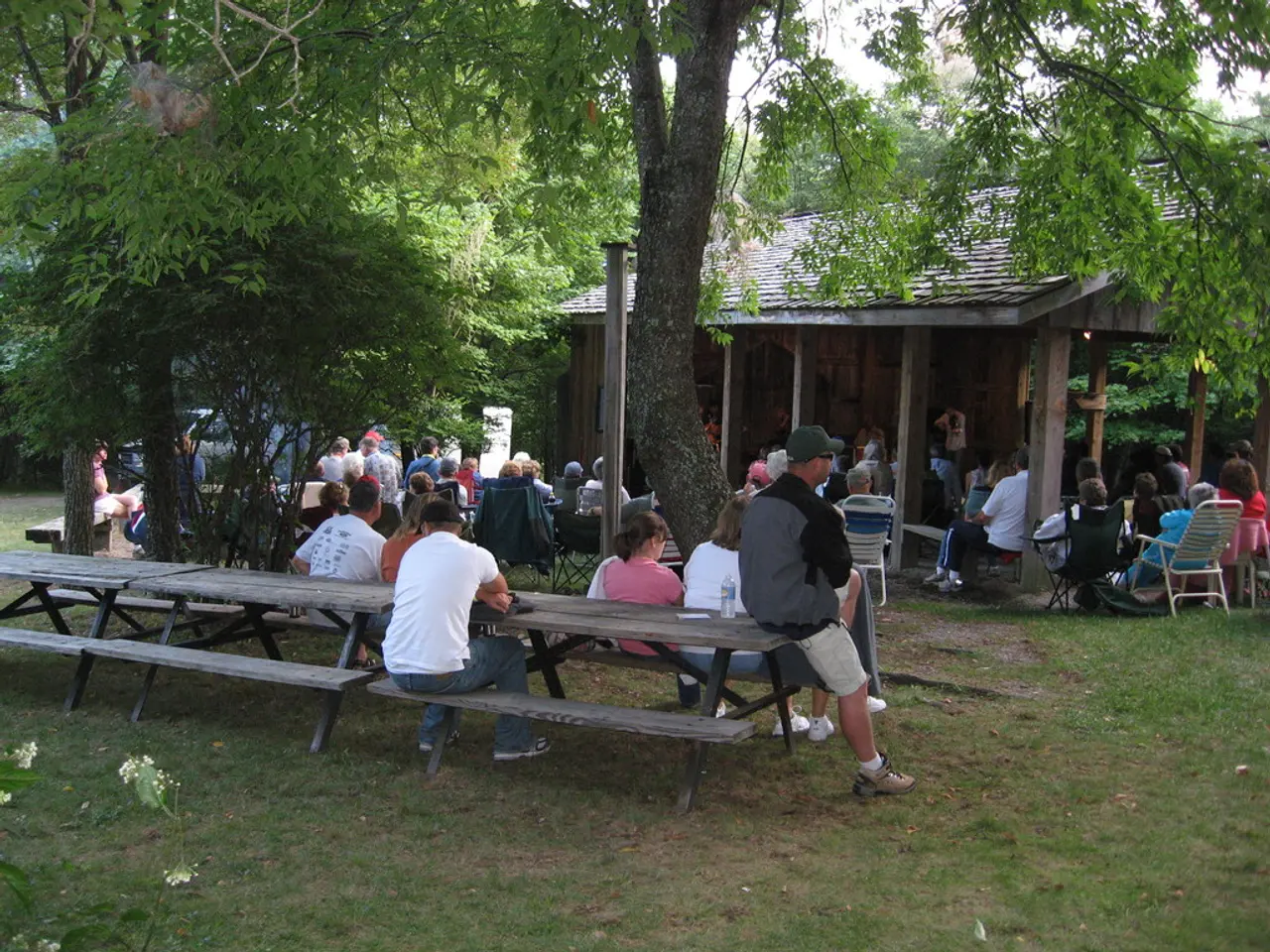Utilizing a ladder securely at home: Strategies to avoid accidental falls
In recent years, a concerning trend has emerged in Victoria: an increase in home ladder falls resulting in injuries. The latest data reveals that improper ladder positioning, using damaged or unsuitable ladders, and a lack of attention to secure footing are common causes of these incidents.
To combat this issue, it's essential to prioritise safety when using ladders at home. Prevention methods focus on using ladders safely by following correct setup procedures, inspecting equipment for defects, maintaining three points of contact, and ensuring stable placement on firm, level ground.
While specific Victorian insights on home ladder falls often relate to workplace or construction settings, these principles apply equally to domestic use. WorkSafe Victoria materials emphasise the high risk of falls from height due to unsafe ladder practices and advocate for thorough safety measures including safe work method statements (SWMS) and fall prevention awareness.
To further minimise the risk of ladder falls, consider these additional prevention strategies:
- Ensure the ladder angle is about 75 degrees for stability.
- Avoid overreaching or leaning sideways while on the ladder.
- Keep the ladder clean and free from slippery substances.
- Have another person act as a spotter where possible.
- Use ladders that meet safety standards and are appropriate for the height and task.
It's also crucial to be honest with oneself about one's equipment, abilities, and age, and to call in a professional if one is unsure or does not feel comfortable completing the task. Some home maintenance tasks involving ladders, such as cleaning gutters, changing lightbulbs, and trimming hedges, may be unsafe for individuals who experience dizziness, have low vision or trouble seeing, have difficulties with their coordination, balance, or strength, or are at risk of side effects from medicine.
Complacency is a major cause of ladder falls, often occurring when people overreach, do not keep three points of contact, position their ladder on an unsupportive surface, use the wrong type of ladder for the task, or overestimate their ability. To avoid this, always double-check your ladder's height and weight rating, ensure it has working safety locks and non-slip feet, and position it away from doors or windows that could knock it over.
In hot weather, assess the job and the environment before working at height, and wear appropriate non-slip footwear. For step ladders, climb only to the second rung from the top and never stand on the pail shelf, spreaders, or back section. On extension ladders, climb only to the third rung from the top and never climb above the point where the ladder touches the wall or vertical support.
Injuries from ladder falls are often severe, with fractures being the most common injury sustained (40.7%). Over the past five years, there has been a significant increase of 21% in ladder falls resulting in injury in Victoria, with more than 6000 presentations to hospital emergency departments. By following these safety tips and prevention strategies, we can help reduce these numbers and ensure a safer home environment for all.
Home-and-garden practices should include adherence to ladder safety guidelines to prevent accidents. For instance, maintaining a 75-degree angle for stability, keeping ladders clean, and only using ladders that meet safety standards is essential for a home-and-garden lifestyle that prioritizes safety.




